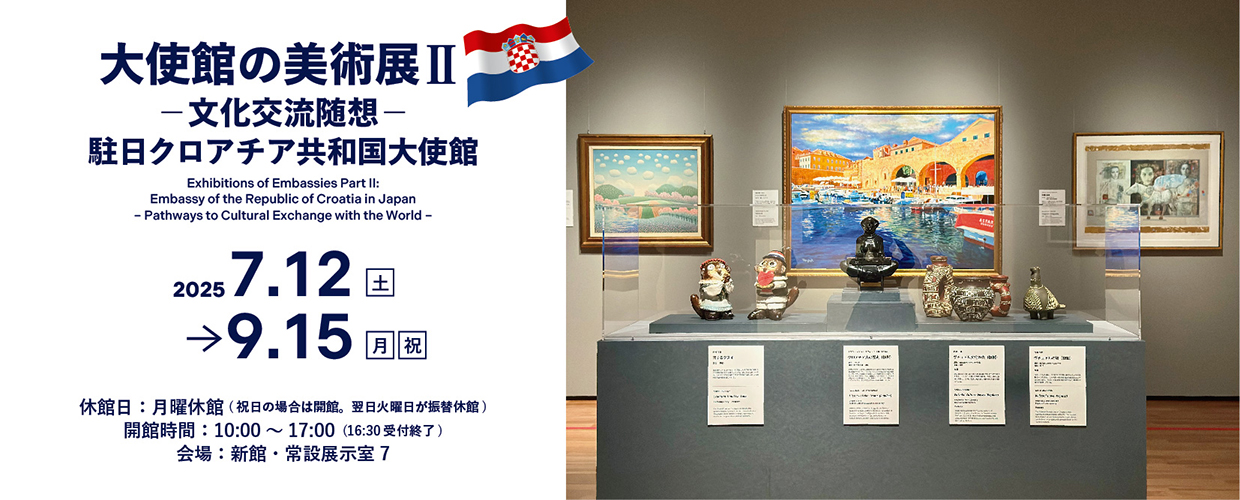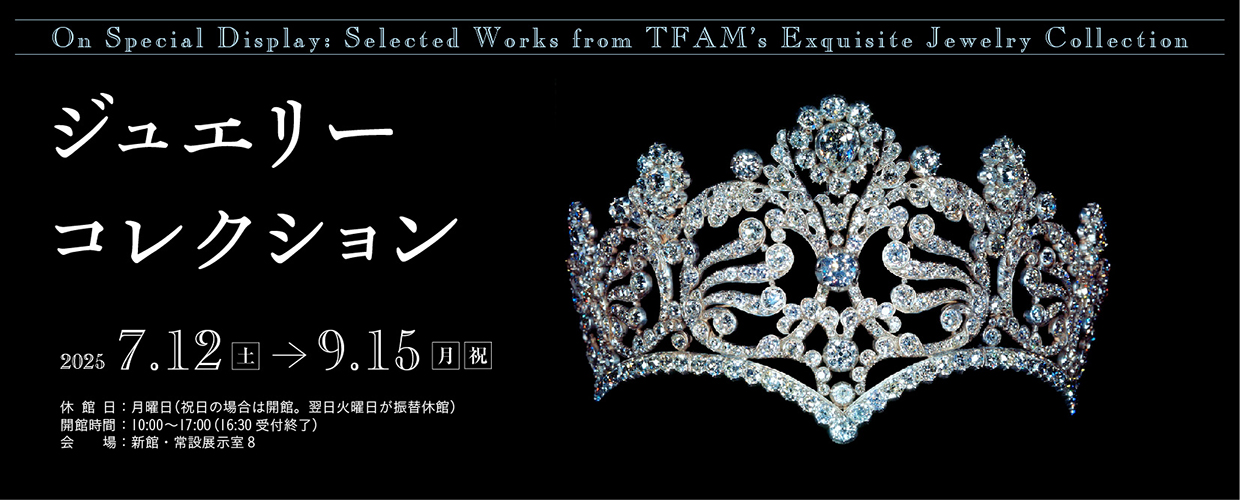1857 (Ansei 4)/Color woodblock print on paper
35.7 x 24.2 cm
SUMMARY
Jumantsubo was where Senda and Sengoku lie in modern Tokyo’s Koto-ku. Beginning in 1723 a landfill was established in the shallow tideland there. This landfill reached the size of 330,000 square meters, an area which in Japanese can be called jumantsubo, and it is from there that the place was named. Due to the fact it often experienced tidal flooding it was not suitable for living, and while the central government installed a coin-casting mint there, it eventually became a private possession of the Hitotsubashi Tokugawa family in 1796. In the late Edo era it became a popular spot for gathering shells in spring, for its New Year’s sunrise view and for its view of the moon. The Susaki Benten shrine facing the coast (now known as Susaki shrine) also attracted many visitors. Scenes of shell gathering, the first sunrise of the year and lively moments at Susaki Benten shrine are depicted in Hiroshige’s series of work, such as Toto Meisho (“Famous Places of the Eastern Capital”) and Edo Meisho (“Famous Places of Edo”), which were published in the Tenpo years. However, in this painting from Meisho Edo Hyakkei (“One Hundred Famous Views of Edo”) Hiroshige’s approach differs greatly from these motifs. He expresses a rough winter wetland from a bird’s eye perspective looking from the seaside. There is a tranquility to the shore under silent snow, yet the eagle with its wings outstretched in pursuit of its prey high above is full of dynamism: this contrast of stillness and movement is the greatest charm of this piece. In the far distance the sacred mountain of the Kanto region, Mount Tsukuba – as symbolic as Mount Fuji – looks down on the earth calmly.
ARTIST
Utagawa Hiroshige
1797-1858
At the age of 13, he inherited the family estate and lost his parents at the same time. At 15, he became a disciple of Utagawa Toyohiro, and took on the name Hiroshige. His teacher Toyohiro passed, and Hiroshige published Famous Places in the Eastern Capital in 1831, and the next year in 1832, published The Fifty-three Stations of the Tokaido, which would be his masterpiece. This firmly established his status as a landscape artist. From that point on, he received commissions one after another, and worked on many pictures of famous places, rich in poetic sentiment, including The Sixty-nine Stations of the Kiso Kaido, co-created with Keisai Eisen. In his final years, he released the culmination of his artistic skill, One Hundred Famous Views of Edo, as his last crowning achievement.
List of artworks by the same artist
INFORMATION

Saturday, March 29 - Sunday, May 25, 2025
From Edo to Modern Times: The Ukiyo-e Collection of the Tokyo Fuji Art Museum Soka Art Museum (Kaohsiung, Taiwan)
Friday, October 8 - Sunday, November 14, 2021
From the Tokyo Fuji Art Museum Collection: “THIS IS JAPAN” Eternal Japanese Art Oita Art Museum (Oita, Japan)
EXPLORE

You can search and browse content on a platform across museums and archival institutions nationwide, and create My Gallery (online exhibition).






